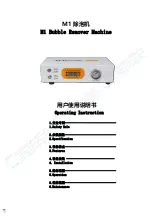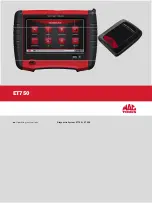
Operating Tips
Operating the Machine
•
Start the engine. If the A
UTO
I
DLE
function is
turned off, run it at H
ALF
I
DLE
until it warms up.
Run the engine at H
IGH
I
DLE
, lift the cutting units,
disengage the parking brake, press the forward
traction pedal, and carefully drive to an open area.
•
Practice moving forward and reverse, and starting
and stopping the machine. To stop the machine,
remove your foot from the traction pedal and let it
return to N
EUTRAL
or press down on the reverse
pedal.
Note:
When going downhill in the machine, you
may need to use the reverse pedal to stop.
•
When possible, mow up and down hills rather than
across them. Have the cutting units lowered when
going down a hill to maintain steering control. Do
not attempt to turn the machine on a hill.
•
Practice driving around obstacles with the cutting
units up and down. Be careful when driving
between narrow objects so that you do not damage
the machine or cutting units.
•
Always drive slowly in rough areas.
•
If an obstacle is in the way, lift the cutting units to
mow around it.
•
When transporting the machine from 1 work
area to another, raise the cutting units to the
fully upward position, shut off the PTO, press the
mow/transport switch to the T
RANSPORT
position,
and press up the engine-speed switch to set the
engine to high-idle speed.
Changing Mowing Patterns
Change mowing patterns often to minimize a poor
after-cut appearance from repeatedly mowing in the
same direction.
Understanding Counterbalance
The counterbalance system maintains hydraulic
back pressure on the cutting unit-lift cylinders. This
counterbalance pressure transfers cutting-unit weight
to the machine drive wheels to improve traction. The
counterbalance pressure has been set at the factory
to an optimal balance of after-cut appearance and
traction capability in most turf conditions. Decreasing
the counterbalance setting can produce a more
stable cutting unit but can decrease the traction
capability. Increasing the counterbalance setting
can increase the traction capability, but may result
in a poor after-cut appearance; refer to
Counterbalance (page 21)
.
Resolving After-Cut Appearance
Refer to the
After-cut Appearance Troubleshooting
Guide
available at www.Toro.com.
Using Proper Mowing Techniques
•
To begin cutting, engage the PTO, then approach
the mowing area slowly. Once the front cutting
units are over the mowing area, lower the cutting
units.
•
To achieve the professional straight-line cut and
striping that is desirable for some applications, find
a tree or other object in the distance and drive
straight toward it.
•
As soon as the front cutting units reach the edge of
the mowing area, lift the cutting units, and perform
a teardrop-shaped turn to quickly line up for your
next pass.
•
Bolt-in mulching baffles are available for the
cutting units. The mulching baffles perform well
when you maintain turf on a regular schedule
to avoid removing more than 25 mm (1 inch) of
growth per cutting. When you cut too much growth
with the mulching baffles installed, the after-cut
appearance may deteriorate and the observed
power to cut the turf increases. The mulching
baffles also perform well for shredding leaves in
the fall.
Mowing When the Grass Is Dry
Mow either in the late morning to avoid the dew, which
causes grass clumping, or late afternoon to avoid
the damage that direct sunlight can cause on the
sensitive, freshly mowed grass.
Selecting the Proper Height-of-Cut
Setting to Suit Conditions
Remove no more than approximately 25 mm (1 inch),
or 1/3 of the grass blade when cutting. In exceptionally
lush and dense grass, you may need to raise your
height-of-cut setting.
Mowing with Sharp Blades
A sharp blade cuts cleanly and without tearing or
shredding the grass blades like a dull blade. Tearing
and shredding causes the grass to turn brown at
the edges, which impairs growth and increases
susceptibility to diseases. Ensure that the blade is in
good condition and that there is a full sail.
34
















































